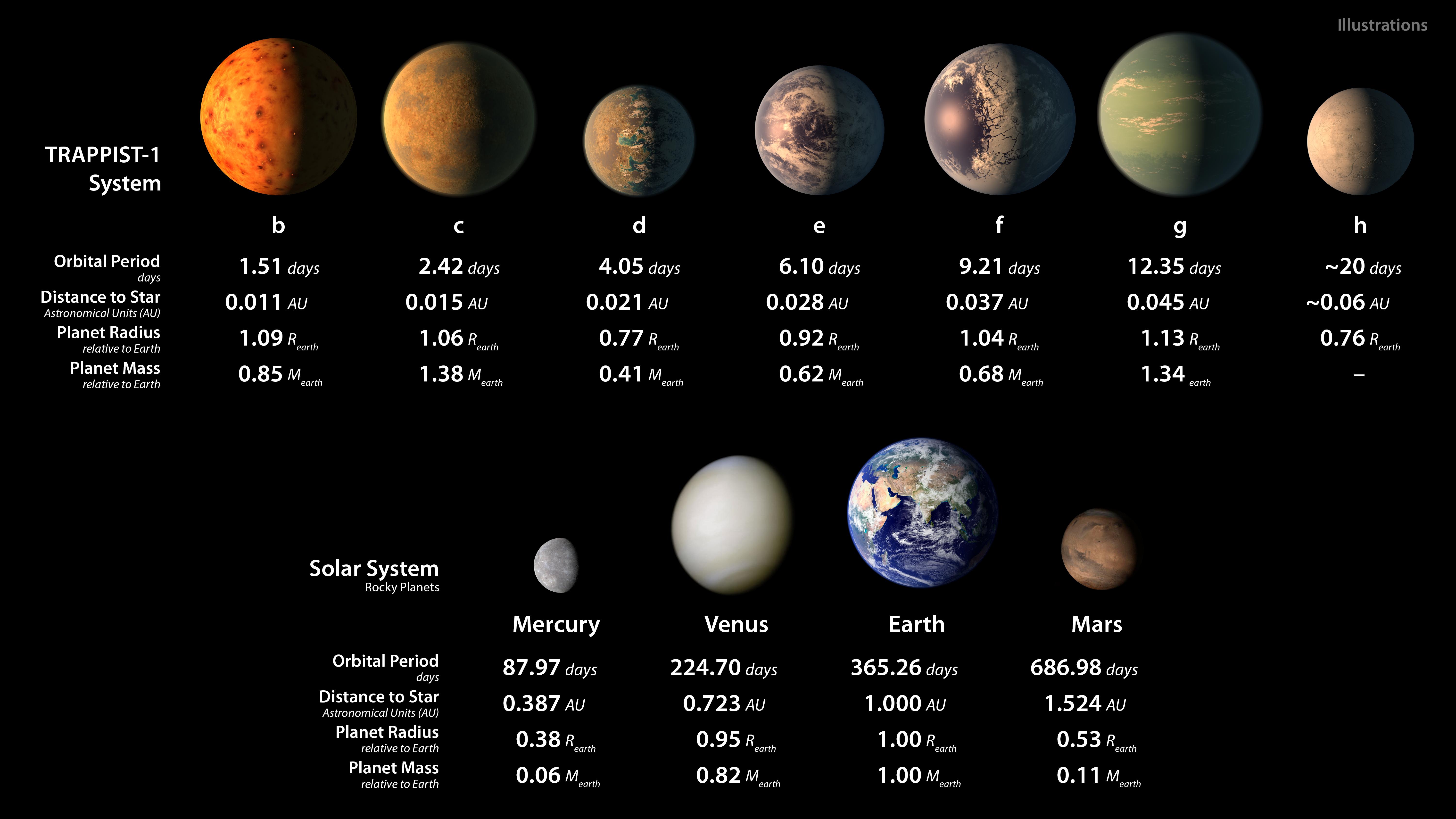|
Penemuan yang mengagumkan buat bidang astronomi. Kelmarin mengikut waktu tempatan, Pentadbiran Aeronautik dan Angkasa Lepas (NASA) di Amerika Syarikat mengumumkan tujuh planet yang menyerupai bumi sekali gus menjanjikan potensi menemui kehidupan di luar Sistem Suria.
Menurut laporan jurnal Nature, penemuan itu juga mendapati tujuh planet itu sepadan dengan saiz dan jisim bumi, dan tiga daripadanya sesuai untuk menghasilkan air yang penting kepada hidupan. Dalam satu kenyataan media yang dikeluarkan, NASA memaklumkan, terdapat sebuah planet yang kedudukannya dekat dengan bumi dan bintang kerdil merahnya digelar Trappist-1, akan membolehkan ahli astronomi memahami sifat atmosfera setiap planet, sekali gus mencari bukti kimia wujudnya sebarang aktiviti biologi.
"Sistem Trappist-1, yang hanya sejauh 39 tahun cahaya, mempunyai bilangan planet bersaiz bumi terbesar yang mengorbit satu bintang tunggal." Menurut Timbalan Ketua Pengarah dalam ahli jawatan kuasa untuk misi sains di NASA, Thomas Zurbuchen, pememuan kali amat penting untuk memyempurnakan pencarian manusia selama ini. Pasukan NASA berharap misi yang seterusnya iaitu membuat kajian dan mengenal pasti sama ada kesemua planet yang ditemui itu mempunyai hidupan lain, dan dijangka keputusannya bakal diketahui dalam masa sepuluh tahun ini.- CARI |
|
10
 Bagus |
16
 Marah |
14
 Terkejut |
14
 Sedih |
13
 Lawak |
21
 Bosan |

Anonymity

Anonymity

Anonymity

Anonymity

Anonymity

Anonymity

Anonymity

Anonymity

Anonymity

Anonymity

Anonymity

Anonymity

Anonymity

Anonymity

Anonymity

Anonymity

Anonymity

Anonymity

Anonymity

Anonymity

Anonymity

Anonymity

Anonymity

Anonymity




terpaku replied at 23-2-2017 08:27 AM
ummah tanah ait takkan berminat dgn topik ni..mereka lebih berminat dgn isu fattah amin bercinta dg ...
Simunggu replied at 23-2-2017 09:24 AM
tak ..kamu salah...mereka lagi berminat cerita petanah pak seman pasal 1emdb & gst di kedai mamak. ...


CiliPadiSedap replied at 23-2-2017 08:21 AM
akak punya imagination tahun 2050, ada LRT daripada masjid jamek ke planet serupa bumi ini..
...


airfilterkotor replied at 23-2-2017 08:47 AM
Scientists discover seven Earth-sized planets orbiting nearby star
Rising hope of finding a "seco ...
mbhcsf replied at 23-2-2017 10:09 AM
interesting ye, analysis yg menyeluruh setiap planet tu yg dua kecik tu belum ada lagi ye...curio ...

spiderman80 replied at 23-2-2017 02:26 PM
Semoga planet2 baru dijumpai itu ada perkhidmatan Internet.


ADVERTISEMENT